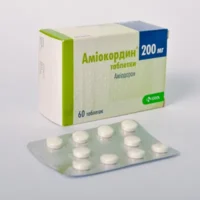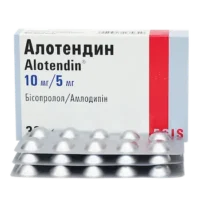Description
Enalapril (Enalapril) Coated Tablets 0.02 g. №20
Ingredients:
Each coated tablet contains 0.02 g of enalapril.
Mechanism of Action:
Enalapril, an angiotensin-converting enzyme (ACE) inhibitor, functions by inhibiting the ACE enzyme, leading to vasodilation and decreased aldosterone secretion.
Pharmacological Properties:
Enalapril exerts its effects by blocking the conversion of angiotensin I to angiotensin II, a potent vasoconstrictor, resulting in reduced peripheral resistance and blood pressure.
Indications for Use:
Enalapril is indicated for the management of hypertension, heart failure, and for enhancing survival post-myocardial infarction.
Contraindications:
Avoid using enalapril if pregnant, have a history of angioedema related to previous ACE inhibitor use, or exhibit hypersensitivity to ACE inhibitors.
Side Effects:
Common side effects of enalapril may include dizziness, persistent cough, and hyperkalemia. It is advised to seek medical advice if experiencing any adverse reactions.
Usage Instructions:
The typical dosage ranges from 5-40 mg daily, adjusted based on the specific medical condition. Administer the tablet whole with a glass of water as directed by a healthcare professional.
Benefits Compared to Analogues:
Enalapril has demonstrated efficacy in reducing blood pressure and enhancing cardiac function, thereby lowering the incidence of cardiovascular events and mortality in heart failure patients. Its renoprotective properties also make it a valuable option in managing chronic kidney disease.
Suitable Patient Groups:
Enalapril is suitable for adults, including the elderly, and is not recommended for use in pregnant individuals or those with a history of angioedema related to ACE inhibitors.
Storage Conditions and Shelf Life:
Store enalapril tablets in a cool, dry place away from direct sunlight. Check the expiration date on the packaging and do not use the product beyond that date.
Packaging Description:
Enalapril is available in blister packs containing 20 coated tablets, each tablet containing 0.02 g of enalapril.





